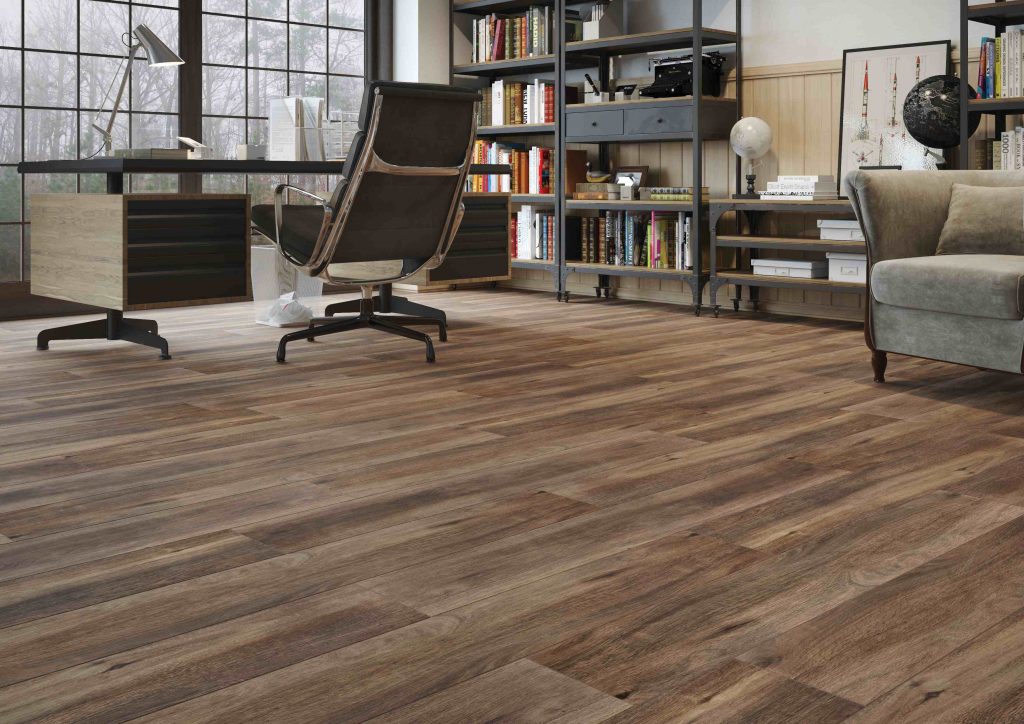They look great and are available in almost every colour you can think of – we are of course talking about tiles! The two most popular types of tiles are porcelain and ceramic. See the differences between the two tile types and decide which of them is best choice for your home!
What is a ceramic tile?
Ceramic tiles are typically made of clay, talc and sand, all combined in an appropriate ratio. They are light-weight and workable. However, due to their properties, there are some restrictions in their application. Ceramic tiles are perfect for walls, but because of their low resistance to fracture and their ability to easily get scratched, they would not work well on floors. Also, due to their high absorbency rates they cannot be used outdoors.
Advantages of porcelain tiles
What is the difference between porcelain and ceramic tiles? First of all, the difference lies in the raw materials used to produce them. Porcelain tiles are made of several types of clay, sand and feldspar. Ceramic tiles are made of finely ground sand, clay and talc. The process by which the tiles are made also differs: porcelain tiles are formed using high pressures and are fired at high temperatures (ca. 1100 – 1200 °C). It is thanks to this process that the porcelain tiles have so many advantages, in particular:
- frost resistance (thanks to this feature porcelain tiles maintain dimensional stability both at high and sub-zero temperatures),
- low water absorbency rate,
- high resistance to scratching and mechanical damage,
- a wide variety of colours and structures, as well as the option of having the appearance of other materials such as concrete, wood, stone and marble, along with many different finishes.

Porcelain vs. ceramic – comparison of characteristics
Still cannot decide which tiles to use? Here is a short table comparing their technical characteristics. Take a closer look and you certainly won’t have any difficulties making your perfect selection!
| Ceramic tiles | Porcelain tiles | |
| Finish | smooth | matt
lapatto (semi polished) polished |
| Water absorbency | 6-10% | 0.05-0.5% |
| Frost resistance | no | yes |
| Resistance to mechanical damage | low | high |
In conclusion, porcelain tiles have their advantages in the following circumstances:
- they can successfully be used outdoors, e.g. on a terrace or a balcony – and they will not change their look or properties due to frost or high temperatures,
- due to their low absorbency rates, floor and wall porcelain tiles are great for bathrooms and pools,
- they are a perfect choice when dealing with high traffic areas, as they maintain their appearance and functionality for a long time.
You can find more unconventional porcelain tiles here. Look closely at our offer and find the tiles that suit your design needs best!






 Tyto stránky používají soubory cookies pro vylepšení dojmu při pohybu po webových stránkách. Mezi nimi jsou soubory cookies, které jsou kategorizovány jako nezbytné, jsou uloženy v prohlížeči, protože jsou nezbytné pro fungování základních funkcí webových stránek. Používáme také soubory cookies třetích stran, které nám pomáhají analyzovat a pochopit, jak používáte tyto webové stránky. Tyto soubory cookies budou uloženy ve vašem prohlížeči pouze s vaším souhlasem. Máte také možnost zamítnout tyto soubory cookies. Avšak zamítnutí některých z těchto souborů cookies může mít vliv na pohodlí při prohlížení.
Tyto stránky používají soubory cookies pro vylepšení dojmu při pohybu po webových stránkách. Mezi nimi jsou soubory cookies, které jsou kategorizovány jako nezbytné, jsou uloženy v prohlížeči, protože jsou nezbytné pro fungování základních funkcí webových stránek. Používáme také soubory cookies třetích stran, které nám pomáhají analyzovat a pochopit, jak používáte tyto webové stránky. Tyto soubory cookies budou uloženy ve vašem prohlížeči pouze s vaším souhlasem. Máte také možnost zamítnout tyto soubory cookies. Avšak zamítnutí některých z těchto souborů cookies může mít vliv na pohodlí při prohlížení.